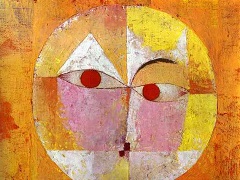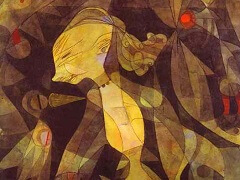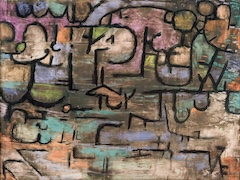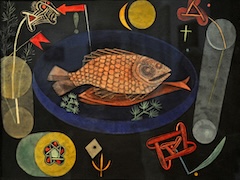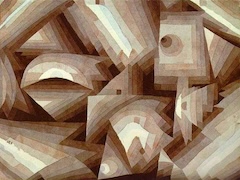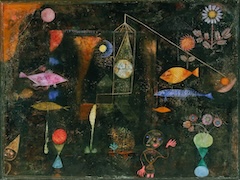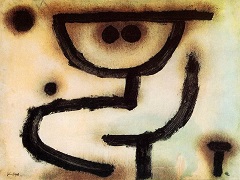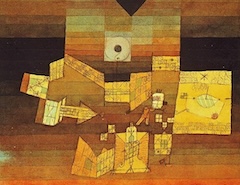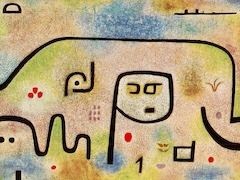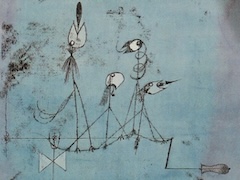Kettledrummer by Paul Klee
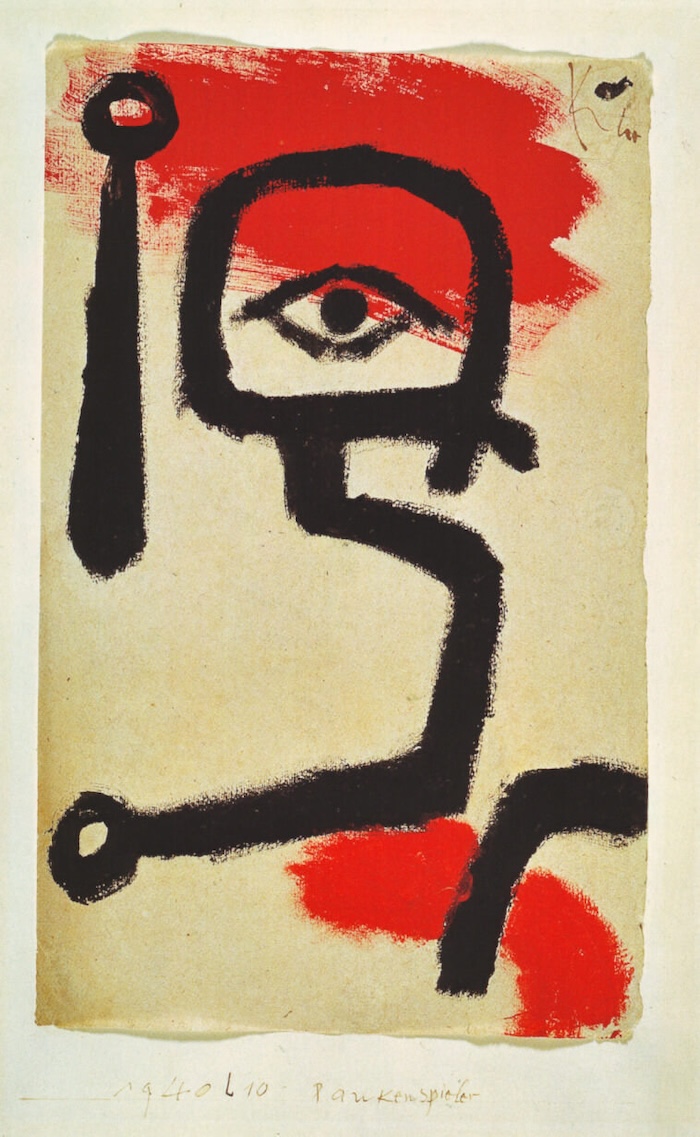
With Kettledrummer, Klee attained an extremely expressive degree of symbolism, even though he used plastic and chromatic means so sparingly. The figure consists only of two arms, one of which is linked to an encircled eye while the other is isolated in space like an exclamation mark. Two red patches (magenta and vermillion) add a dramatic emphasis. They give an optical expression to the drum rolls. The mysterious eye fixes the spectator with a searching look. This Kettledrummer from the apocalypse seems to be saying: "It is time!"
On July 8, 1937, when Klee was very ill, Lily Klee wrote to Grohmann: "He stays up until eleven at night, and the drawings fall to the ground one after the other." And in connection with the making of this work, Grohmann remembers Klee remarking that he had, "felt so excited it was as if I was beating a drum." This expresses, whether it be in a realistic or a metaphorical way, one of the fundamental problems of Klee's theoretical work - the relationship to time. Should the heartbeat be compared to drumbeats? Is it a chronometer? Klee questions the relationship of at least three different ideas of time:
Andrew Kagan compares the Kettledrummer with one of the drawings from the Eidola series entitled, Knaueros, Former Kettledrummer (1940). In contrast to the usual commentaries on this series, which bring the term eidola back to eidos, meaning an archetype in a more Jungian than Platonic sense, for Klee the title of the series maintains its original Greek meaning: images, simulacrum, portraits, idols, and even ghosts. In Kettledrummer, all the references come together and crystallize: the memory (according to Grohmann) of a dead kettledrummer from the Dresden Opera company by the name of Knauer whom Klee had admired, the use of Greek letters that belong to the epic as well as the "birth of tragedy", and the imminence of the final catastrophe. It is impossible to not compare this work and Knaueros, with the drummer of the Dance of the Dead, engraved on wood by Holbein in 1538, whose drumsticks resemble bones. The allegorical figure of the Kettledrummer, worthy of being some modern Memento Mori, indirectly evokes the strange figure that came to order Mozart's Requiem.

